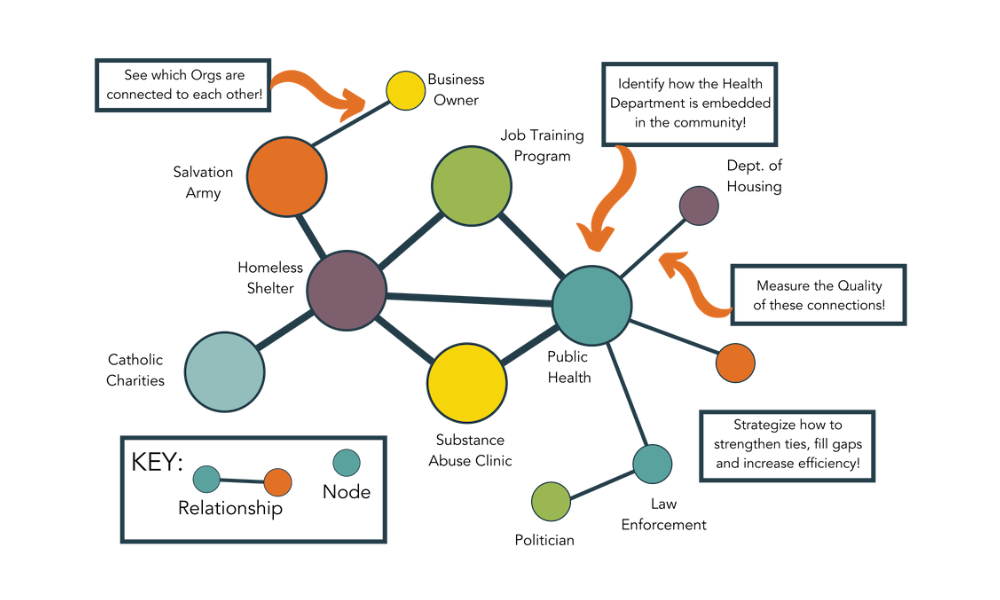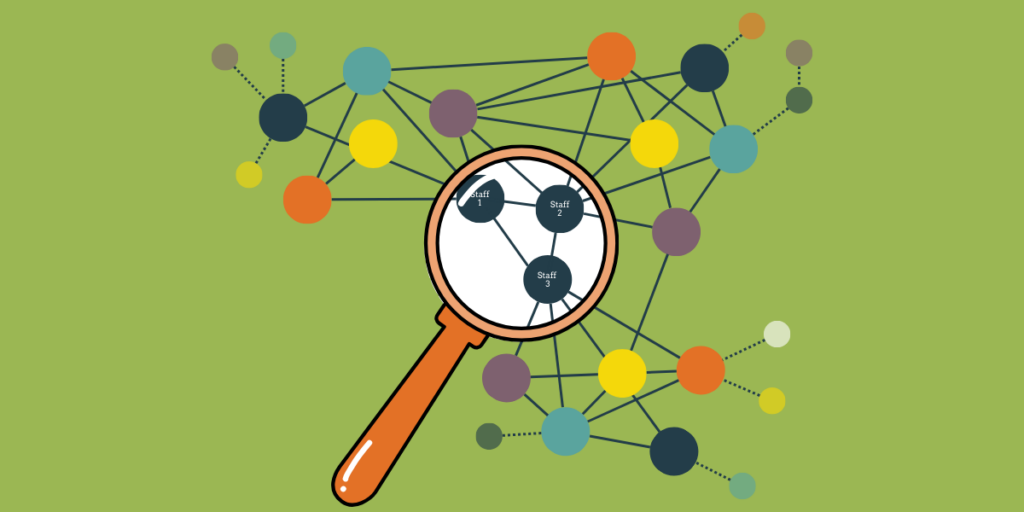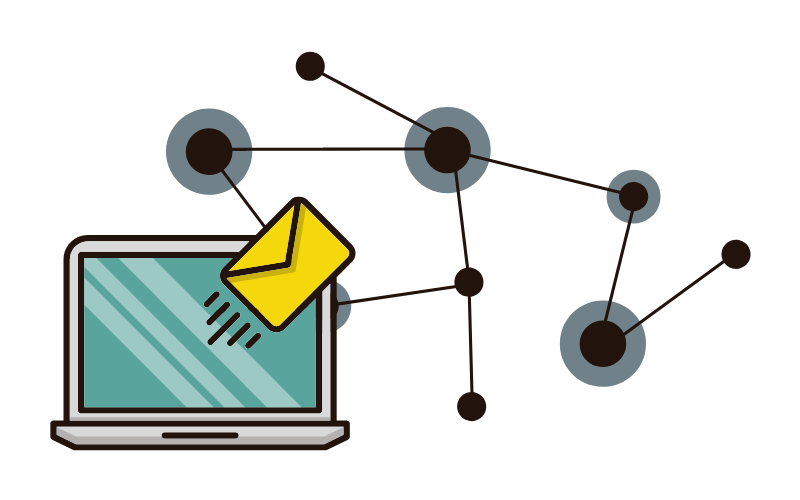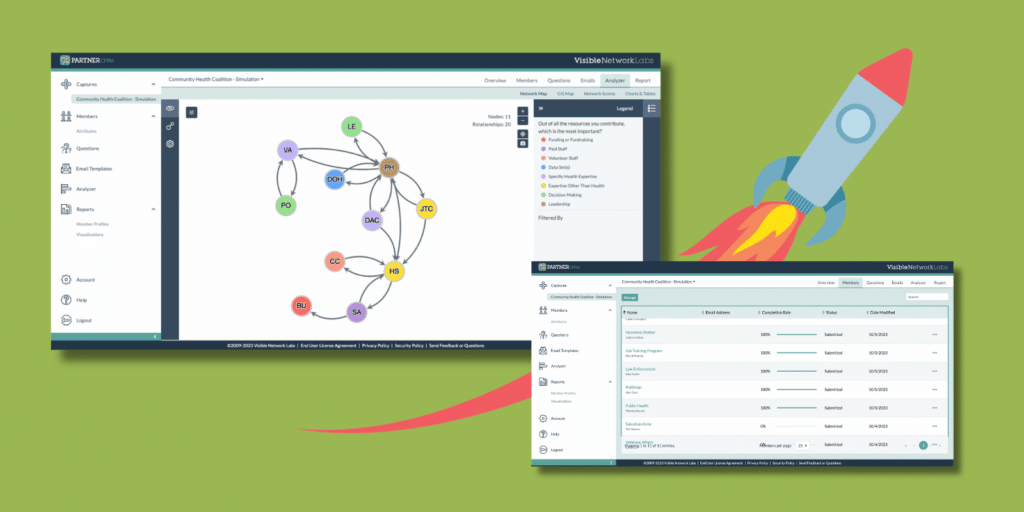In the realm of Social Network Analysis (SNA), two primary types of data are instrumental in understanding and leveraging network dynamics: attributional and relational data.
Attributional data pertains to the characteristics of individual entities within a network, such as demographic details, professional roles, or organizational attributes.
On the other hand, relational data delves into the connections between these entities, encompassing aspects like frequency of interaction, quality of relationships, shared resources, and the degrees of trust and value perceived among partners.
In this article, we will dig into the difference between these two data types, how they are used in practice, the questions they help address, and the pros and cons of using them. Let’s go ahead and get started.
Table of Contents
First: What is Social Network Analysis?
Before delving into the intricacies of attributional and relational data in Social Network Analysis (SNA), it’s essential to understand what SNA is and its relevance, especially in a community impact context.
Social Network Analysis is a methodological approach that examines relationships and patterns among entities — such as individuals, groups, or organizations — within a network. It’s not just about who is present in a network; it’s more about how they are connected, the nature of these connections, and the impact of these relationships on individual behavior and overall network dynamics.

Leveraging SNA for Community Impact
SNA is particularly valuable in community impact initiatives. It allows practitioners to visualize and analyze the complex web of relationships that underpin social structures.
By understanding these networks, community leaders, activists, and organizations can identify key influencers, understand resource flows, and gauge the health and resilience of their communities. This information is crucial for designing effective interventions, enhancing collaboration, and fostering stronger, more supportive community networks.
In essence, SNA provides a roadmap for navigating and enhancing the complex world of community relationships, making it an indispensable tool for anyone invested in creating positive social change.
Now, we can discuss the two primary types of data involved in social network analysis: attributional data and relational data.
Attributional Data: The 'Who' and 'What'
Attributional data, sometimes referred to as nodal or individual-level data, includes specific characteristics of the entities (like individuals, organizations, or groups) within a network. These characteristics can range from demographic details (age, gender, etc.) to professional attributes (job titles, roles, organizational affiliations) and even personal preferences or behaviors.
This type of data answers questions like:
- Who are the members of this network?
- What are their individual characteristics or attributes?
- How are these characteristics distributed across the network?
Pros of Using Attribution Data
Attributional data is more commonly used due to several reasons:
- Availability: It’s often more readily available and easier to collect.
- Simplicity in Analysis: It’s generally easier to clean, manage, and analyze.
- Familiarity: Many organizations are already accustomed to handling this type of data.
Cons of Using Attribution Data
However, it has limitations:
- Incomplete Picture: It often leads to a siloed understanding of entities, neglecting the rich context of their interactions.
- Lacks Dynamics: Attributional data fails to capture the evolving nature of relationships and network dynamics.

Relational Data: The 'How' and 'Why'
Relational data, on the other hand, focuses on the ties or connections between these entities. It looks at the nature of relationships, including aspects like the frequency of interaction, the type of communication, the level of trust, and the perceived value of these connections.
This data addresses questions such as:
- How are entities in this network connected?
- What is the nature of their interactions?
- How do these relationships evolve over time?
Pros of Using Relational Data
Relational data, while less common, offers profound insights:
- Understanding Interactions: It provides a deeper understanding of how entities in a network relate and influence each other.
- Reveals Network Dynamics: It’s essential for uncovering the structure and dynamics of networks, which are critical for strategic decision-making.
Cons of Using Relational Data
But, it also comes with challenges:
- Complex Collection: Gathering relational data can be more time-consuming and resource-intensive.
- Analytical Complexity: It requires more sophisticated methods for analysis and interpretation.
- Privacy Concerns: Managing relational data often involves navigating more sensitive privacy and ethical considerations.
Attribution Data vs Relational Data
This table summarizes the main differences between these two types of data in the context of social network analysis.
| Factor | Attributional Data | Relational Data |
| Definition | Specific characteristics of entities within a network, such as demographic details, professional attributes, and personal preferences. | Focuses on the ties or connections between entities, including frequency of interaction, type of communication, level of trust, and perceived value. |
| Questions Answered | Who are the members of this network? What are their individual characteristics? How are these characteristics distributed? | How are entities in this network connected? What is the nature of their interactions? How do these relationships evolve? |
| Pros | Readily available and easy to collect; Simpler to clean, manage, and analyze; Familiar to many organizations | Provides deeper understanding of interactions; Reveals network dynamics essential for strategic decision-making |
| Cons | Leads to a siloed understanding, neglecting interaction context; Fails to capture evolving nature of relationships and network dynamics | Time-consuming and resource-intensive to collect; Requires sophisticated methods for analysis; Raises privacy and ethical considerations |

Get our monthly newsletter with resources for cross-sector collaboration, VNL recommended reading, and upcoming opportunities for engaged in the “network way of working.”
Using Both Data Types for Social Network Analysis
While attributional data is crucial for understanding the characteristics of network members, it provides a limited view when used in isolation. By integrating it with relational data, PARTNER CPRM offers a more comprehensive understanding of the network.
This combination not only illuminates who the network members are but also how they interact and influence each other, providing a complete picture of the network’s ecosystem. This holistic approach is key to understanding and leveraging network dynamics for more effective and strategic community partnership management.
CRMs vs CPRMs: Attribution vs Relationships
Conventional Customer Relationship Management (CRM) systems have been pivotal in managing interactions and maintaining information about clients or partners. These systems excel in handling attributional data—collecting and analyzing information about who your partners are, their roles, preferences, and other individual characteristics.
For instance, a CRM can efficiently store and process data such as contact details, organizational affiliations, and engagement history. This focus is incredibly valuable for managing individual relationships and tailoring communication strategies to specific partners.
What Sets a CPRM System Apart?
PARTNER Community Partner Relationship Management (CPRM), however, stands unique in this landscape. As a tool grounded in network science, it not only encompasses the attributional data capabilities of traditional CRMs but elevates the management process by integrating relational data.
PARTNER CPRM captures and analyzes the dynamics of how community partners interact, share resources, and build trust and value in relationships. This dual-focus approach allows organizations to see not just who their partners are, but also how they are interconnected and interact within the broader community ecosystem.
Real-World Applications
Here are some different ways you can leverage attribution and relational data during social network analysis to strategize, identify opportunities, and improve your collaboration with your partners.

1. Strategic Resource Allocation
Consider a public health department planning a health intervention. Attributional data might reveal which organizations have the necessary resources and expertise.
Relational data, however, will show the intensity of collaborations, trust levels, and the flow of information between these organizations. By combining these data types, the department can strategically allocate resources and roles, ensuring effective collaboration.
2. Enhancing Impact through Understanding Interactions
A philanthropic foundation aiming to fund impactful initiatives can benefit significantly from CPRM. While attributional data helps identify potential grantees, relational data reveals the depth and quality of their existing collaborations.
This dual-data approach enables the foundation to fund projects not only based on organizational capacity but also on their ability to work effectively with others, thereby maximizing the impact of their grants.
3. Community Engagement and Advocacy
For coalitions advocating for social change, understanding the relational dynamics between members can be as crucial as knowing their individual attributes.
Through CPRM, coalitions can identify key influencers, understand the trust dynamics, and tailor their advocacy strategies to leverage these relationships, thus amplifying their collective voice.
Learn more about PARTNER CPRM: Request a Demo!

Learn more about PARTNER CPRM by scheduling a personalized 1:1 web demo with a network science expert to see it for yourself. They can show you the main features, walk through an example use case, and answer your specific questions in real-time.
Click here to request a demo to get started.
Using Attributional and Relational Data for SNA with PARTNER CPRM
In conclusion, while attributional data provides valuable insights into ‘who’ your partners are, integrating this with relational data offers a more nuanced understanding of ‘how’ they interact and collaborate within the network. PARTNER CPRM’s unique approach, rooted in network science, allows for a more dynamic and comprehensive management of community partnerships.
This synergy not only enhances strategic decision-making but also fosters more effective, collaborative, and impactful community networks. In the world of community partnership management, embracing both attributional and relational data is not just an advantage—it’s a necessity for driving meaningful change.






